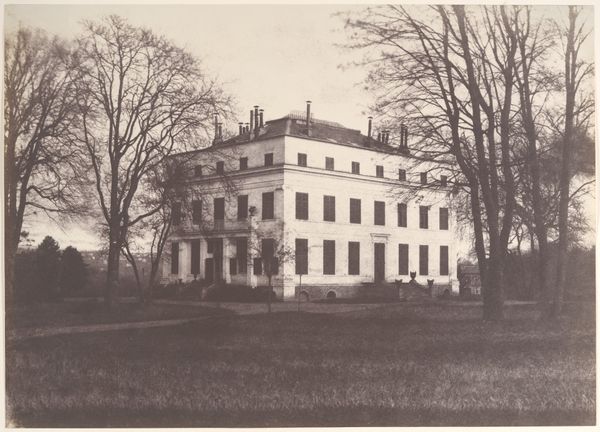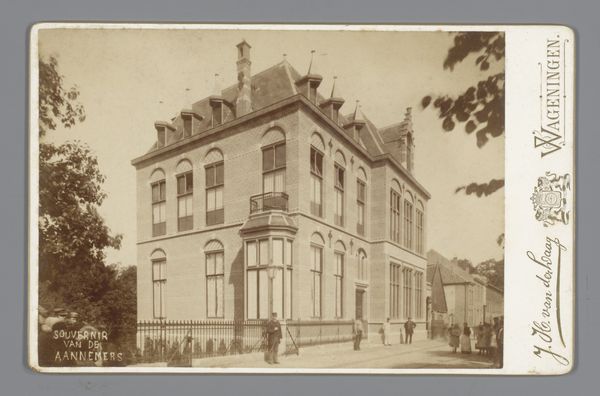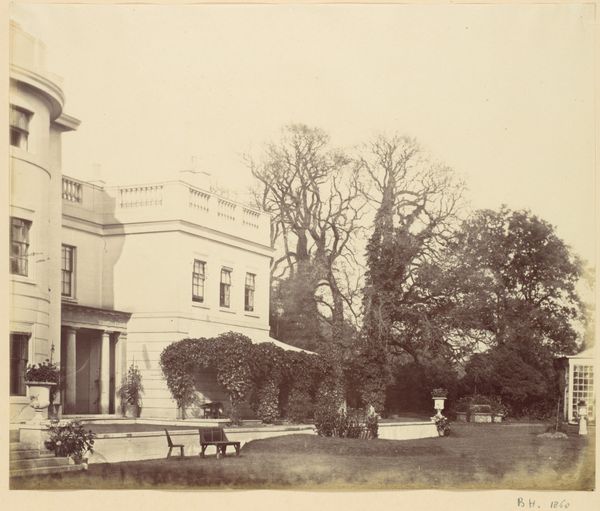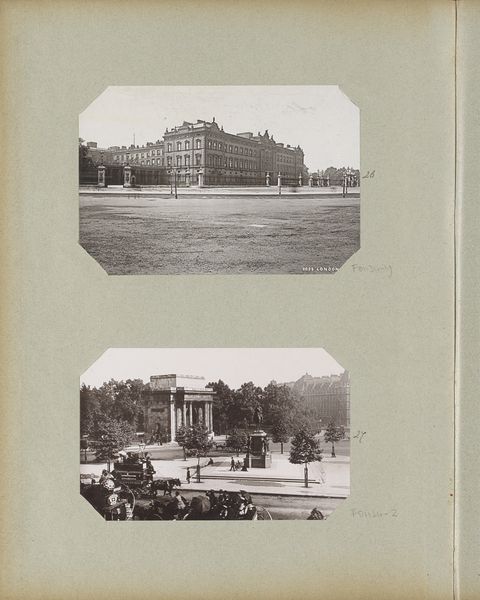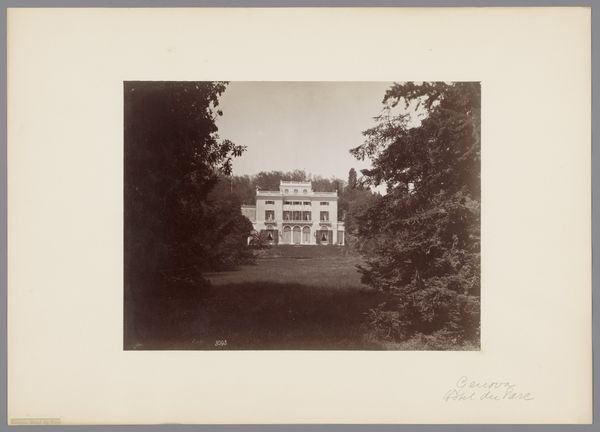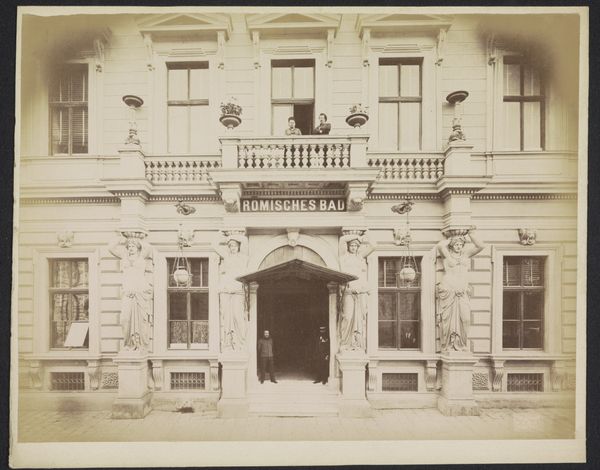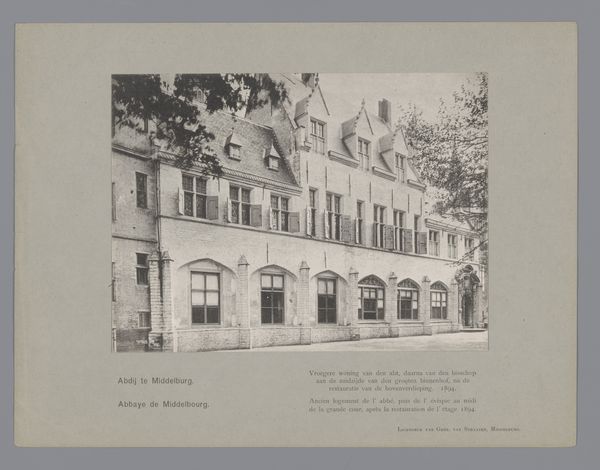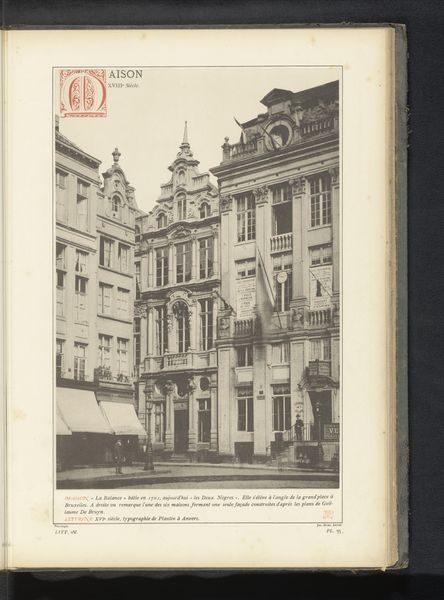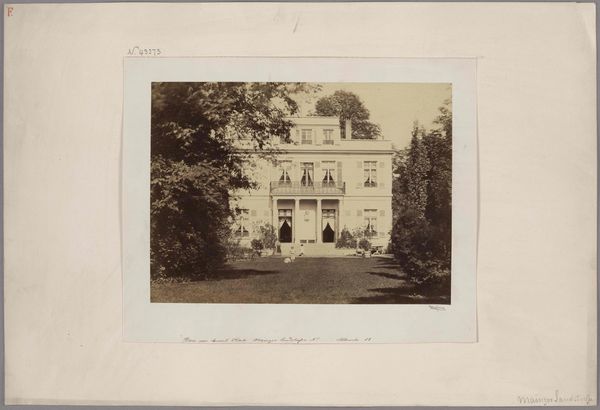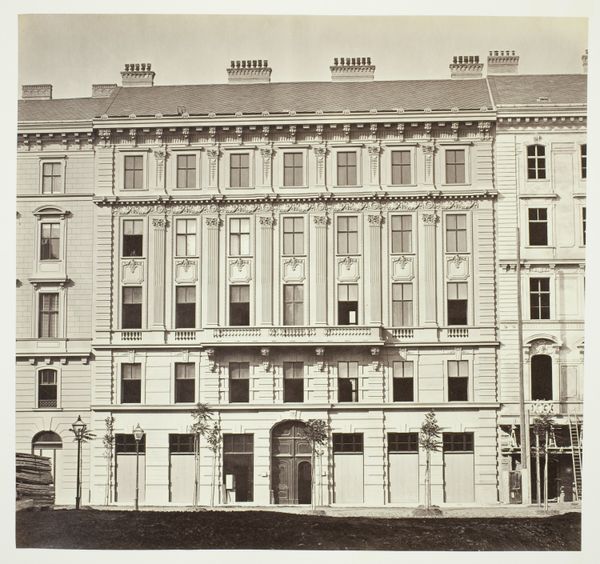
Gezicht op de façades van Hôtel Beauharnais aan de tuin en binnenplaats 1875 - 1930
0:00
0:00
Dimensions: height 448 mm, width 323 mm
Copyright: Rijks Museum: Open Domain
Editor: Here we have an interesting photographic print, “Gezicht op de façades van Hôtel Beauharnais aan de tuin en binnenplaats”, which roughly translates to “View of the facades of Hotel Beauharnais on the garden and courtyard.” It’s by an anonymous photographer and dates to somewhere between 1875 and 1930. I’m struck by how the photographer captured two perspectives of the same building. What's your read on this work? Curator: What's striking to me is the photograph as an object, particularly its reproduction. This print becomes a tool – part of a larger system of disseminating architectural ideals and Parisian grandeur. How does photography, as a relatively new and accessible medium, alter the perception and consumption of elite spaces? Consider the labor involved in producing and distributing such prints versus experiencing the building firsthand. Editor: That's fascinating – the photograph as a vehicle for consumption. So, the very act of creating and distributing these images democratizes access to something that was traditionally exclusive. Curator: Precisely! It raises questions about accessibility, ownership, and the very materiality of seeing. How does this object change how architectural grandeur is experienced by various social classes and influence the very building production in response to photography as a method of distribution? The materiality of the print, the labor involved in its creation, all contribute to understanding its place in a larger social and economic context. Think of the chemical processes, the paper production… Editor: So it's not just about what is depicted, but about the print *itself* as a crafted object? Curator: Exactly! The material reality shapes its meaning. Now consider, where was this print displayed, and to what degree were multiple editions produced for broader viewership versus highly restricted circulation? Editor: I never considered that so many decisions shape not only the view itself, but how it then becomes part of a network that gives access to new ideas about architecture and societal power structures. Curator: Precisely. Considering process, labor, and context gives us a much richer understanding of the photograph's place in cultural history.
Comments
No comments
Be the first to comment and join the conversation on the ultimate creative platform.
